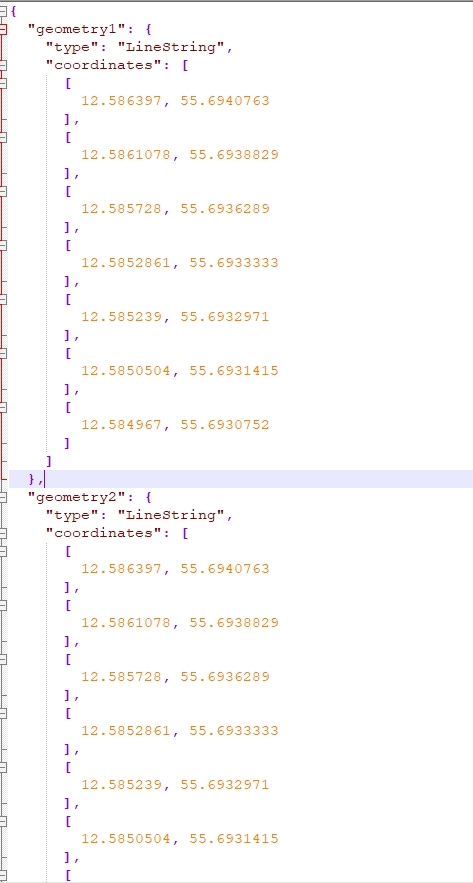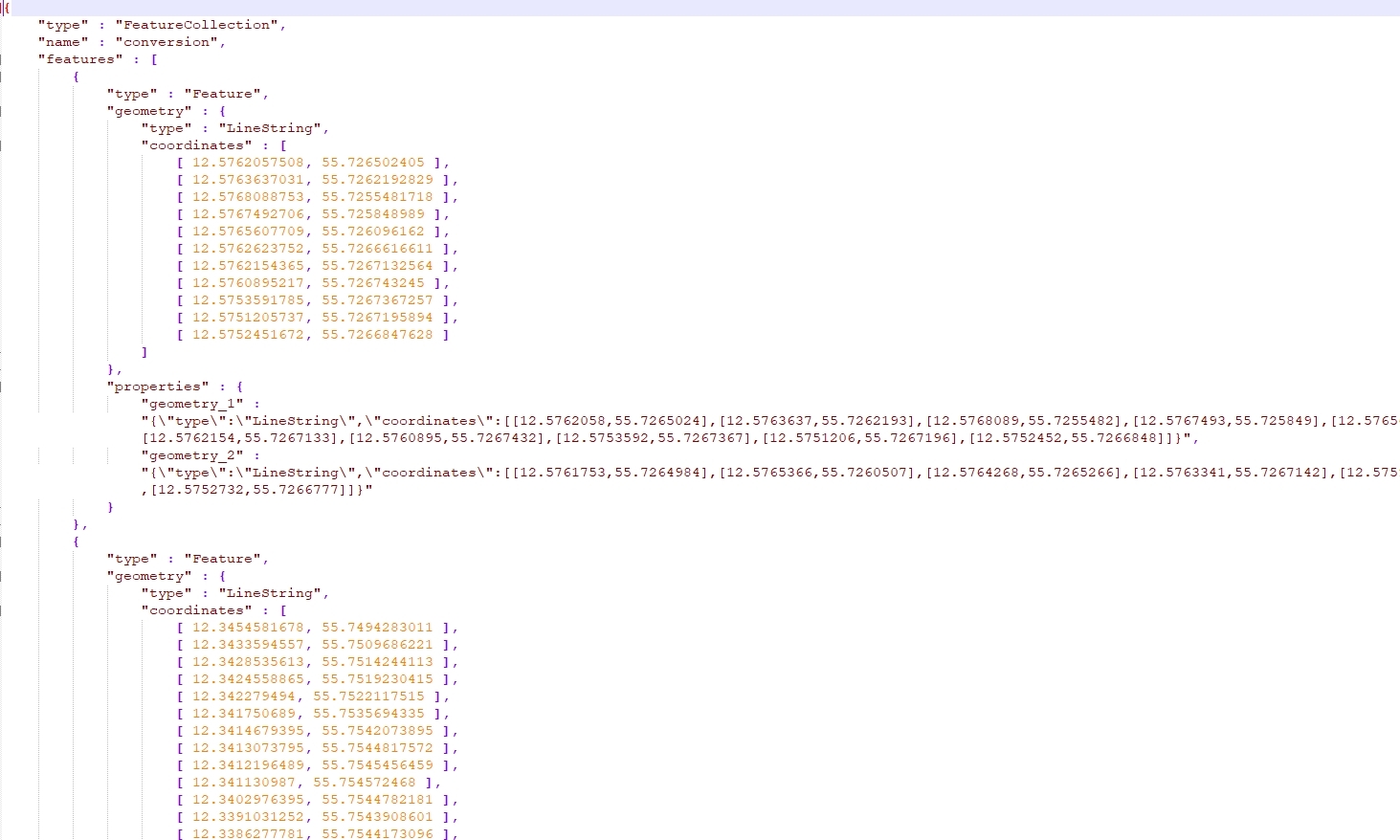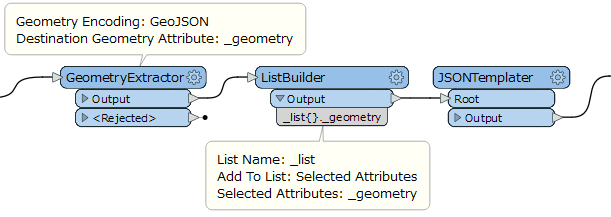Hi All,
I am trying to create json file using the json templater . input for this file has postGIS file with geometry in wkt format . i tried to convert using json templater but it not giving the desired output . can somebody help me with this ? i am uploading the json format file which is my desired output for this . file name examplebody.json
also i am attaching the screenshot of the out put which i am getting.












